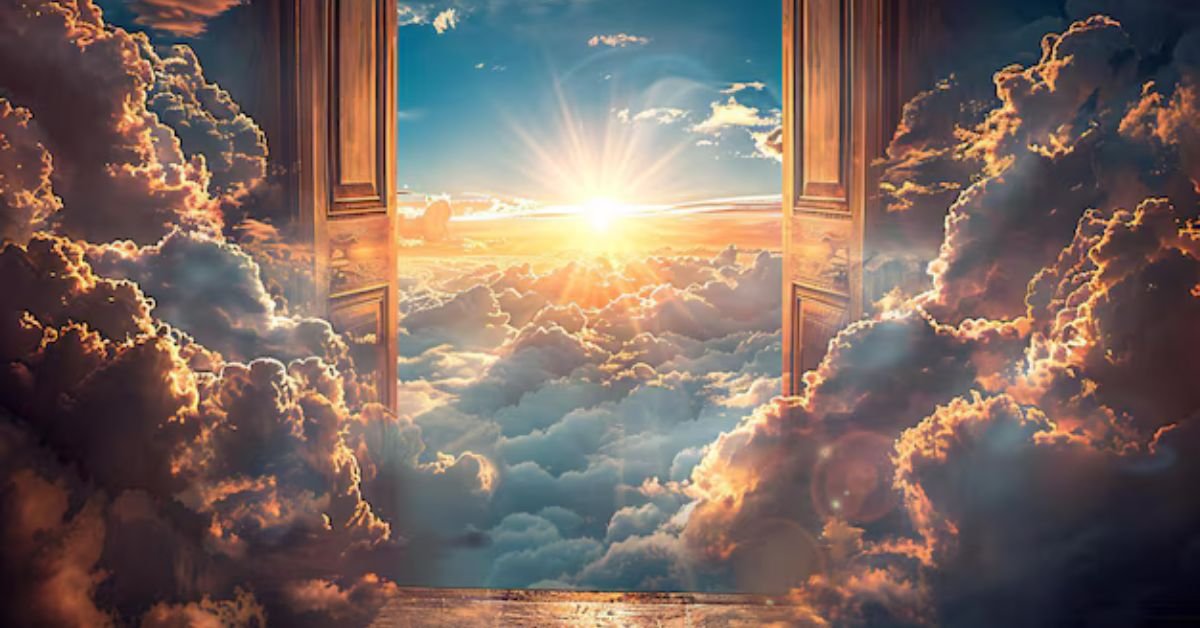The concept of heaven has fascinated humanity for centuries, weaving through religious, philosophical, and cultural beliefs. Each tradition offers its own vision of what heaven might look like, shaping how people envision the afterlife. This article delves into various interpretations of heaven, exploring religious texts, philosophical ideas, and cultural depictions to provide a comprehensive understanding of this transcendent realm.
The Biblical Vision of Heaven
In Christian theology, heaven is often described as a place of eternal bliss and divine presence. According to the Bible, heaven is characterized by its radiant beauty and the absence of suffering.
Biblical Descriptions:
The New Testament, particularly the Book of Revelation, provides vivid imagery of heaven. Revelation 21 describes a city with streets of gold, gates of pearl, and walls adorned with precious stones. The light of heaven is so pure and bright that there is no need for sun or moon, as the glory of God illuminates everything.
Theological Significance:
Heaven is portrayed as the ultimate reward for the righteous, a place where believers are united with God and free from pain and sin. It represents the fulfillment of divine promises and the culmination of a faithful life.
Islamic Perspectives on Jannah
In Islam, it is referred to as Jannah, a term that translates to “paradise” or “garden.” Islamic texts provide a detailed description of Jannah’s physical and spiritual attributes.
Descriptions of Jannah:
The Qur’an describes Jannah as a lush, garden-like paradise with flowing rivers of milk, honey, and wine. The inhabitants of Jannah are depicted as enjoying eternal pleasures, including luxurious clothing, exquisite food, and companionship with loved ones. There is also a promise of being in the presence of Allah, which is considered the ultimate joy.
Spiritual Reward:
Jannah is seen as the ultimate reward for those who live righteously and follow Allah’s commandments. It is a place of unending happiness and fulfillment, where the faithful experience both physical and spiritual delights.
Hindu and Buddhist Views on the Afterlife
Hinduism and Buddhism offer different interpretations of the afterlife, reflecting their unique philosophical and spiritual frameworks.
Hindu Perspective:
In Hinduism, the concept of heaven is not a permanent realm but a temporary state of bliss. Known as Swarga, it is a place where souls experience the fruits of their good karma before reincarnating. Swarga is described as a beautiful, celestial realm with divine beings and pleasures, but it is ultimately transient as the soul continues its cycle of rebirth.
Buddhist Perspective:
Buddhism focuses on the concept of Nirvana rather than a traditional Nirvana is the ultimate state of enlightenment and liberation from the cycle of birth and death (samsara). It is characterized by the cessation of suffering and the attainment of profound inner peace. Unlike a physical place, Nirvana represents a state of being free from worldly attachments and desires.
Secular and Philosophical Interpretations
In secular and philosophical contexts, heaven is often viewed metaphorically rather than literally, reflecting on human aspirations and ideals.
Metaphorical Heaven:
For some, it symbolizes the highest state of human achievement or happiness. This perspective views heaven as a metaphor for personal fulfillment, inner peace, or a perfect society. It represents the pursuit of ideals such as love, justice, and harmony.
Existential Views:
Existential philosophers might interpret heaven as a construct of human imagination, reflecting our desire for meaning and permanence. From this viewpoint, heaven is a way of coping with existential fears and uncertainties about life and death.
Cultural Depictions of Heaven
Various cultures have their own unique depictions of heaven, influenced by local traditions, art, and literature.
Western Culture:
In Western art and literature, heaven is often portrayed as a serene and idyllic landscape, filled with light and beauty. The Renaissance period, for example, featured artistic depictions of heaven as a peaceful, heavenly realm with angelic figures and celestial scenery.
Eastern Culture:
In Eastern cultures, it is sometimes depicted in harmony with nature, reflecting the interconnectedness of all life. Traditional Chinese and Japanese art might show heaven as a tranquil paradise with natural beauty, representing a harmonious balance between humans and the cosmos.
The Role of Imagination and Belief
The image of heaven is heavily influenced by personal imagination and cultural beliefs, shaping how individuals perceive the afterlife.
Personal Imagination:
For many, heaven is a deeply personal and subjective concept. People might envision it based on their hopes, desires, and experiences, leading to diverse and individual interpretations of what heaven might look like.
Cultural Influence:
Cultural and religious backgrounds play a significant role in shaping one’s vision of heaven. These influences determine the symbols, narratives, and expectations associated with the afterlife, leading to a rich tapestry of heaven’s depiction across different societies.
Common Themes Across Different Views
Despite the variations in descriptions, there are common themes that emerge in different interpretations of heaven:
- Peace and Happiness: Across cultures and religions,it is consistently depicted as a state of ultimate peace and happiness, free from suffering and conflict.
- Divine Presence: Many views of it include the presence of a divine or transcendent being, whether it be God, gods, or a state of enlightenment.
- Eternality: Heaven is often associated with eternity, representing a timeless realm where existence transcends the limitations of earthly life.
Conclusion
The concept of heaven is as diverse as humanity itself, reflecting a wide range of beliefs, traditions, and cultural influences. From the biblical vision of a celestial city to the Islamic paradise of Jannah, and the philosophical ideas of Nirvana and metaphorical heavens, each interpretation offers a unique perspective on the afterlife. While the specific descriptions may vary, the underlying themes of peace, fulfillment, and transcendence resonate across different views. Understanding these diverse perspectives enriches our appreciation of how humanity envisions the ultimate realm beyond this life.












One thought on “What Does Heaven Look Like? Exploring Diverse Perspectives”